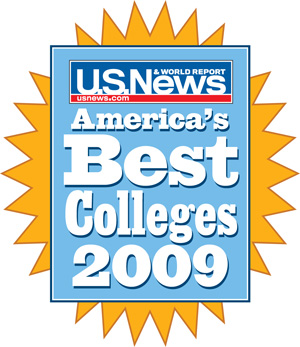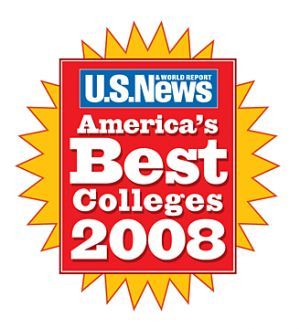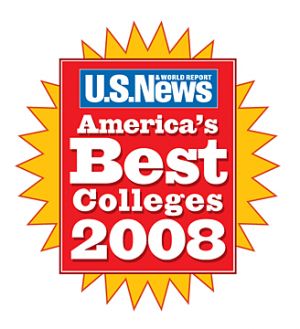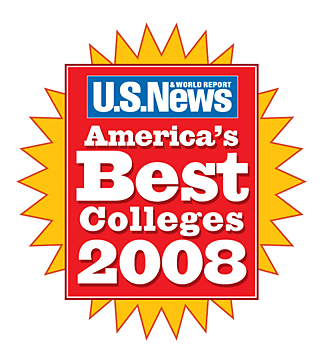
Image courtesy of U.S. News and World Report
This should come as no surprise to anyone who followed the recent kerfuffle over Clemson University’s admission that it spun its numbers to improve its U.S. News & World Report’s ranking: On USNWR’s peer assessment survey, which accounts for a quarter of a school’s overall ranking, college administrators gave their own schools rave reviews while playing down competitor institutions.
Inside Higher Ed obtained copies of peer assessment surveys from 18 colleges and universities. “Haphazard responses” from “apathetic respondents” abounded.
Some telling findings:
- The presidents and/or provosts of 15 of the 18 universities rated their institutions “distinguished,” from Berkeley (no. 21 on last year’s list) to the University of Missouri at Columbia (No. 96).
- At Berkeley in 2008, the chancellor rated other “top” publics — including the University of Virginia, the University of Michigan at Ann Arbor and the University of North Carolina at Chapel Hill – “strong.” However, he rated all of the University of California campuses “distinguished,” with the exceptions of Santa Cruz and Riverside, which were also “strong.” (Merced was not on the list.)
- In a 2009 survey, an official at the University of California at San Diego (No. 35) rated that campus “distinguished,” above the University of Pennsylvania, Duke University, Dartmouth College, Northwestern University and Johns Hopkins University (all “strong”).
- The president of the University of Florida (No. 49) rated his campus “distinguished” in this year’s survey — along with Harvard, Stanford and MIT — and no other institution in Florida above “good,” as reported by the Gainesville Sun.
Inside Higher Ed points out that this isn’t really outright gaming—the peer assessment survey simply asks for opinions. What kind of administrator wouldn’t play up his or her own institution? And according to University of Vermont president Daniel M. Fogel, even if you wanted to play fair, you’d likely end up working overtime: Fogel estimated that if one were to research each school on the survey before passing judgement, filling out the form would take ten hours.
USNWR releases its 2010 college rankings tomorrow.
Update: USNWR 2010 rankings are out, and so is the MoJo Mini College Guide.












